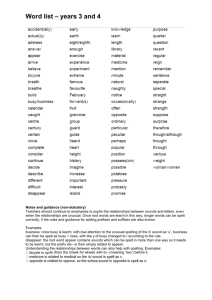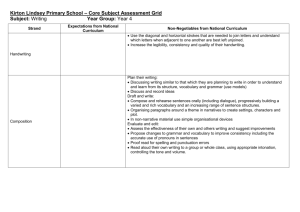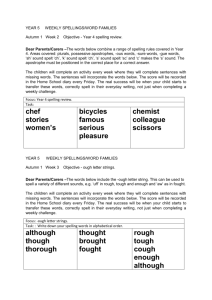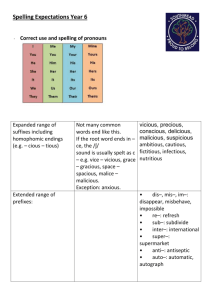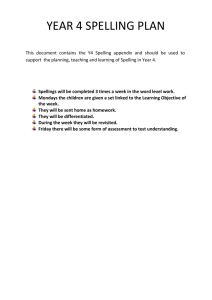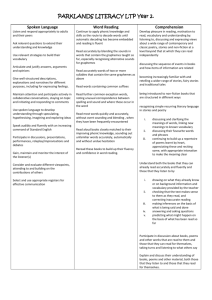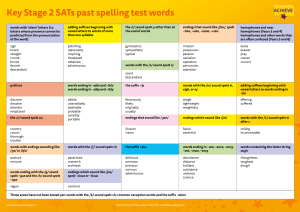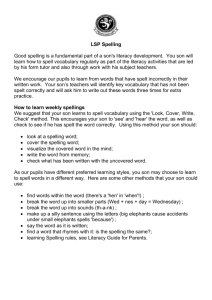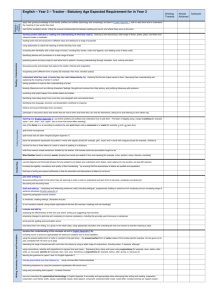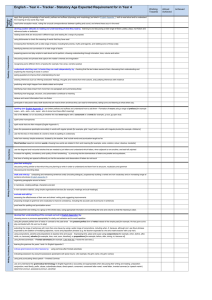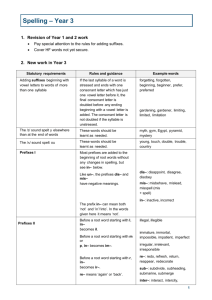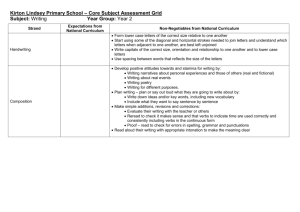Literacy - Parklands Primary School
advertisement
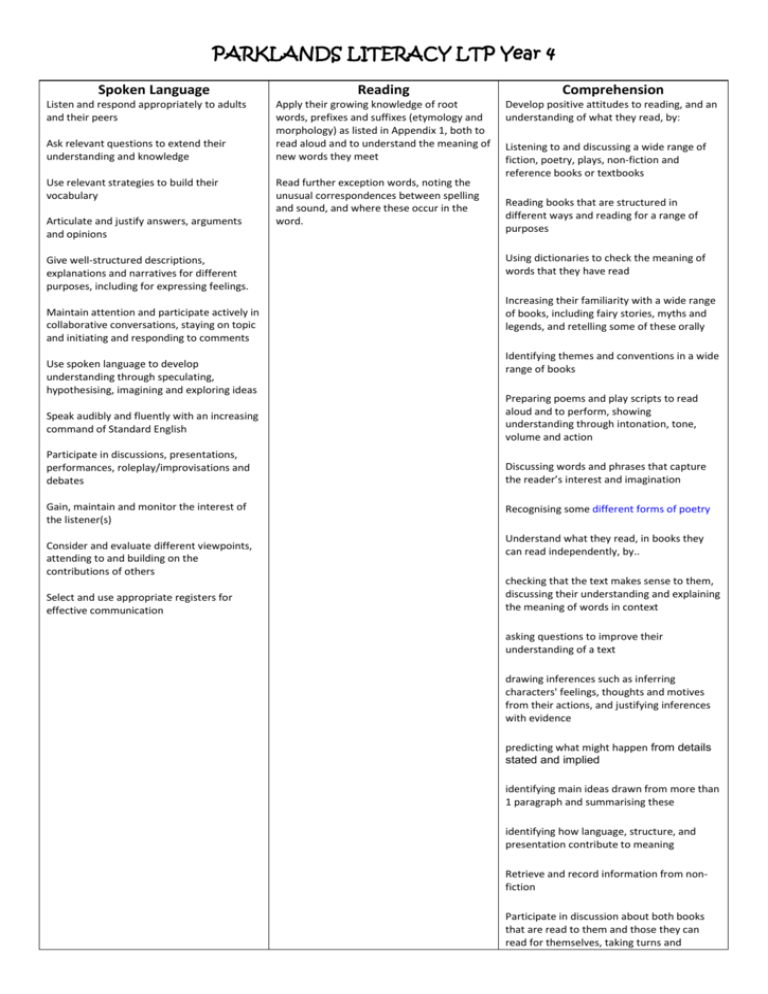
PARKLANDS LITERACY LTP Year 4 Spoken Language Listen and respond appropriately to adults and their peers Ask relevant questions to extend their understanding and knowledge Use relevant strategies to build their vocabulary Articulate and justify answers, arguments and opinions Give well-structured descriptions, explanations and narratives for different purposes, including for expressing feelings. Maintain attention and participate actively in collaborative conversations, staying on topic and initiating and responding to comments Use spoken language to develop understanding through speculating, hypothesising, imagining and exploring ideas Speak audibly and fluently with an increasing command of Standard English Participate in discussions, presentations, performances, roleplay/improvisations and debates Gain, maintain and monitor the interest of the listener(s) Consider and evaluate different viewpoints, attending to and building on the contributions of others Select and use appropriate registers for effective communication Reading Comprehension Apply their growing knowledge of root words, prefixes and suffixes (etymology and morphology) as listed in Appendix 1, both to read aloud and to understand the meaning of new words they meet Develop positive attitudes to reading, and an understanding of what they read, by: Read further exception words, noting the unusual correspondences between spelling and sound, and where these occur in the word. Listening to and discussing a wide range of fiction, poetry, plays, non-fiction and reference books or textbooks Reading books that are structured in different ways and reading for a range of purposes Using dictionaries to check the meaning of words that they have read Increasing their familiarity with a wide range of books, including fairy stories, myths and legends, and retelling some of these orally Identifying themes and conventions in a wide range of books Preparing poems and play scripts to read aloud and to perform, showing understanding through intonation, tone, volume and action Discussing words and phrases that capture the reader’s interest and imagination Recognising some different forms of poetry Understand what they read, in books they can read independently, by.. checking that the text makes sense to them, discussing their understanding and explaining the meaning of words in context asking questions to improve their understanding of a text drawing inferences such as inferring characters' feelings, thoughts and motives from their actions, and justifying inferences with evidence predicting what might happen from details stated and implied identifying main ideas drawn from more than 1 paragraph and summarising these identifying how language, structure, and presentation contribute to meaning Retrieve and record information from nonfiction Participate in discussion about both books that are read to them and those they can read for themselves, taking turns and listening to what others say. Spelling Composition Use further prefixes and suffixes and understand how to add them (English Appendix 1) Plan their writing by: i. Spell further homophones Spell words that are often misspelt (English Appendix 1) Place the possessive apostrophe accurately in words with regular plurals and in words with irregular plurals ii. Draft and write by: i. Use the first 2 or 3 letters of a word to check its spelling in a dictionary Write from memory simple sentences, dictated by the teacher, that include words and punctuation taught so far. Spellings English Appendix 1 Adding suffixes beginning with vowel letters to words of more than one syllable The ɪ sound spelt y elsewhere than at the end of words / / The sound spelt ou /ʌ/ More prefixes The suffix –ation The suffix –ly Words with endings sounding like or /ʒə/ Endings which sound like zan The suffix –ous Endings which sound like spelt –tion, –sion, –ssion, –cian /ʃən/, Words with the /k/ sound spelt ch (Greek in origin) Words with the sound spelt ch (mostly French in origin) /ʃ/ Words ending with the /g/ sound spelt –gue and the /k/ sound spelt –que (French in origin) Words with the /s/ sound spelt sc (Latin in origin) Words with the sound spelt ei, eigh, or ey /eɪ/ Possessive apostrophe with plural words Homophones and near-homophones discussing writing similar to that which they are planning to write in order to understand and learn from its structure, vocabulary and grammar discussing and recording ideas ii. iii. iv. composing and rehearsing sentences orally (including dialogue), progressively building a varied and rich vocabulary and an increasing range of sentence structures (See English Appendix 2) organising paragraphs around a theme in narratives, creating settings, characters and plot in non-narrative material, using simple organisational devices Vocabulary, grammar & punctuation Develop their understanding of the concepts set out in Appendix 2 by: i. ii. iii. iv. v. vi. Indicate grammatical and other features by: i. Evaluate and edit by: ii. i. ii. assessing the effectiveness of their own and others’ writing and suggesting improvements proposing changes to grammar and vocabulary to improve consistency, including the accurate use of pronouns in sentences Proofread for spelling and punctuation errors Read their own writing aloud, to a group or the whole class, using appropriate intonation and controlling the tone and volume so that the meaning is clear. extending the range of sentences with more than one clause by using a wider range of conjunctions, including when, if, because, although using the present perfect form of verbs in contrast to the past tense choosing nouns or pronouns appropriately for clarity and cohesion and to avoid repetition using conjunctions, adverbs and prepositions to express time and cause using fronted adverbials learning the grammar for years 3 and 4 in Appendix 2 iii. using commas after fronted adverbials indicating possession by using the possessive apostrophe with singular and plural nouns using and punctuating direct speech Use and understand the grammatical terminology in Appendix 2 accurately and appropriately in discussing their writing and reading. Terminology for Children adverb, preposition conjunction word family, prefix clause, subordinate clause direct speech consonant, consonant letter vowel, vowel letter inverted commas (or ‘speech marks’) Handwriting and Presentation Use the diagonal and horizontal strokes that are needed to join letters and understand which letters, when adjacent to one another, are best left unjoined Increase the legibility, consistency and quality of their handwriting
